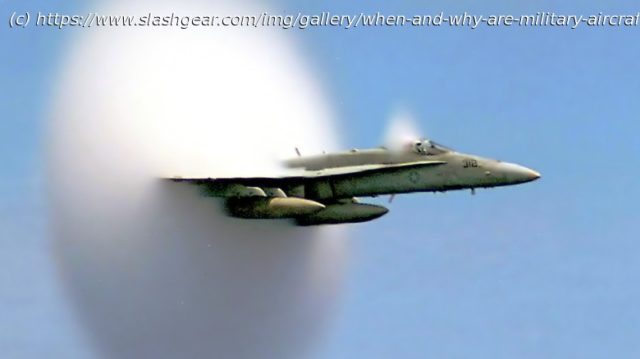Some may already be familiar with the sonic boom that accompanies a break to the sound barrier, but when and why would military aircraft be allowed to do so?
The sound barrier is something many people have heard of, but few understand, as it’s somewhat of a misnomer. The speed of sound is known as Mach 1 (767 mph), and when an object moves beyond this, it’s called „breaking the sound barrier.“ This is also known as supersonic flight, a scientific term referring to moving faster than the speed of sound. When this happens, an aircraft reaches a point of increased aerodynamic drag, resulting in several changes, including a decrease in air temperature and air pressure.
This results in the formation of a white cloud (pictured) and a sonic boom. A sonic boom occurs when an aircraft goes supersonic, generating an enormous amount of sound energy, which sounds much like an explosion to the untrained ear. In Florida, whenever the Space Shuttle landed, Floridians became accustomed to the sound, which could vibrate glass panes and be heard hundreds of miles away, while visitors to the state likely had no clue what was happening. That’s largely because sonic booms are rarely heard throughout the continental United States.
Start
United States
USA — IT When (And Why) Are Military Aircraft Allowed To Break The Sound Barrier?






